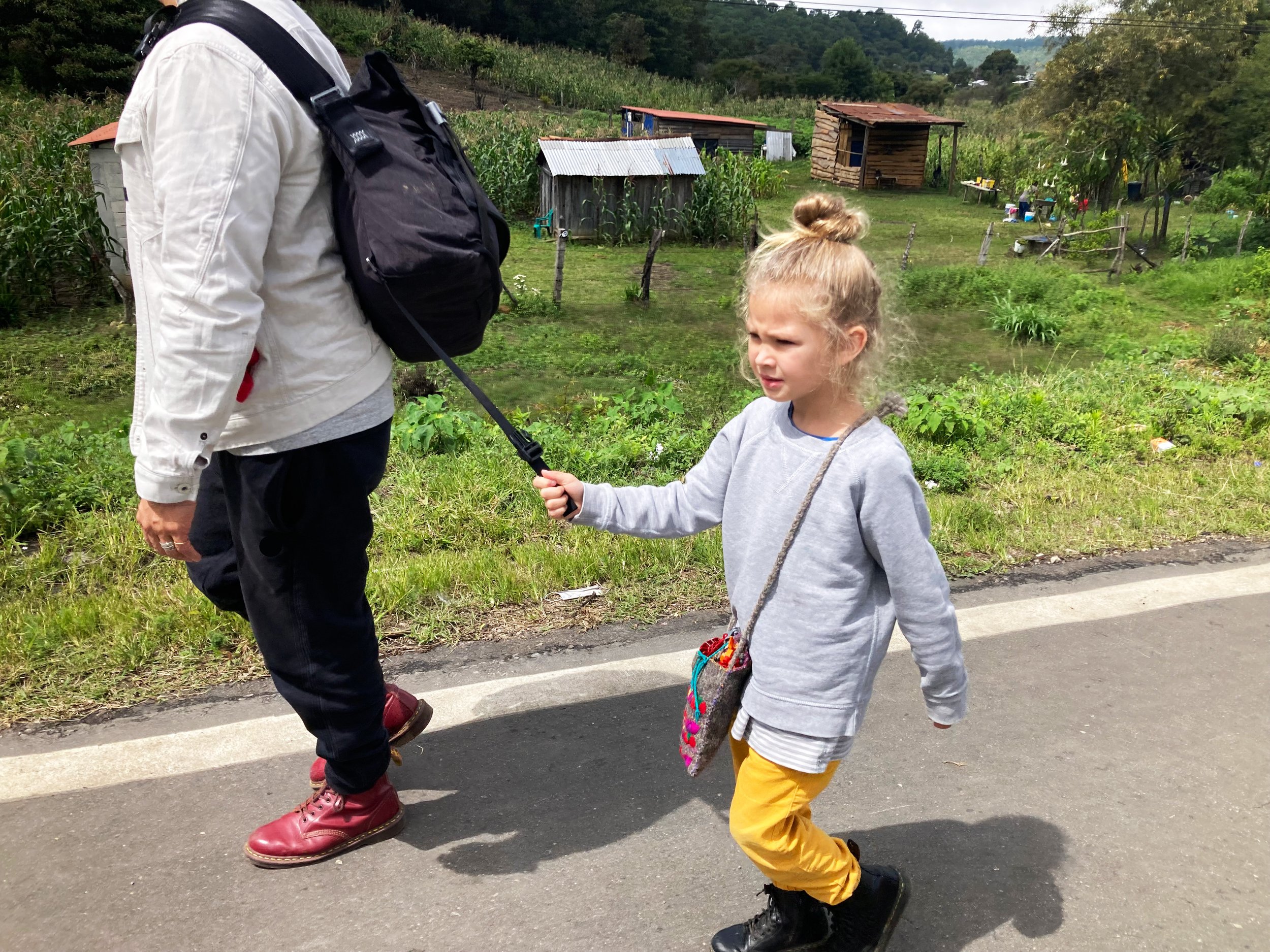Chiapas, Timeline of Recent History
Milpa Corn Tortillas
1500 bce The Mokaya peoples living in what is now Chiapas are cultivating corn, making them one of the earliest communities to cultivate a milpa. The struggle to continue this milpa based lifestyle has been honored and centered by indigenous people in Chiapas for centuries. In 1522 tax collectors traveling on behalf of the invading Spaniard Hernan Cortez began a violent appropriation and was met with three hundred years of resistance.
We have had the enormous luxury of eating tortillas echos a mano with indigenous grown milpa corn, in line at the market and watch the team of makers roll, press, and cook masa on giant hot comals. There is no better smell than this.
Las Fronteras
1824 “Chiapas leaves Guatemala to join a weak Mexican state, allowing relative autonomy for local elites, and beginning decades of liberal / conservative struggles for control over land and Indian labor. both sides accrue huge land holdings, displacing indigenous owners and many Indians are forced into virtual slavery”
- Tom Hansen / Zapatista Reader
The contested border culture is a part of Chiapas, to reach the southern border with Guatemala for business last week we traveled through several protests. Walking along with local travelers and merchants shifting merchandise between highway blockades.
Direct Trade Coffee
1867- 1910 “Dictatorship of Porfirio Diaz oversees accumulation of immense landholdings by local mestizos. The Chiapas economy is opened to international trade, with coffee, cacao and mahogany as the major exports…the agrarian reform (*originating from the Mexican Revolution) has limited impact in the state ” - Tom Hansen / Zapatista Reader
As a result of extensive land grabs, coffee cultivation has taken over much of the traditional farming land in Chiapas and generations of indigenous communities have now incorporated coffee production into their cultural identity. Local coffee shops across the state offer all kinds of hyper artisanal cups.
Beef, Cheese, Tierra
1940 - 70 “The post World War II cattle boom, fueled by World Bank credit to the regions ranchers, escalated Indian landlessness dramatically” - Bill Weinberg / Homage to Chiapas
Traveling in Chiapas you ramble across a landscape of corn and cows, Ocosingo cows and their cheese are prized. we met these on a walk to the ancient Tonina temple site.
Witness Resistance
1970 - 1992 Pressure for land precipitates organized local revolts. 50,000 Indians are expelled from their communities for resisting landowners. many them join settlements in the Lacandon Jungle. communities across the region demand land reform, education in native languages, health care, and labor rights. the EZLN (Zapatista) organizes with indigenous community. governmental corruption leads to the presidency of Salinas who then reforms article 27 of the Mexican constitution leading to extensive land grabs in preparation for NAFTA.
Traveling through the region we witnessed signs of resistance, military occupation and solidarity everywhere. Aldo took this image of us in the back of a collective truck ‘taxi’.
Nuevo Zapatismo
1994 “Nafta is implemented on January 1st. on the same day, 3,000 members of the EZLN occupy six large towns and hundreds of ranches in an armed uprising. Within 24 hours the army responds, bombing indigenous communities and killing at least 145 Indians. Mexican civil society responds with massive demonstrations calling for an end to military repression, and a cease-fire is declared January 12.”
-Tom Hansen / Zapatista Reader
Before the EZLN indigenous community took action at Palenque, a national favorite for the tourist economy sector. We were waiting for a collectivo after visiting the temple site and saw signs of solidarity.






